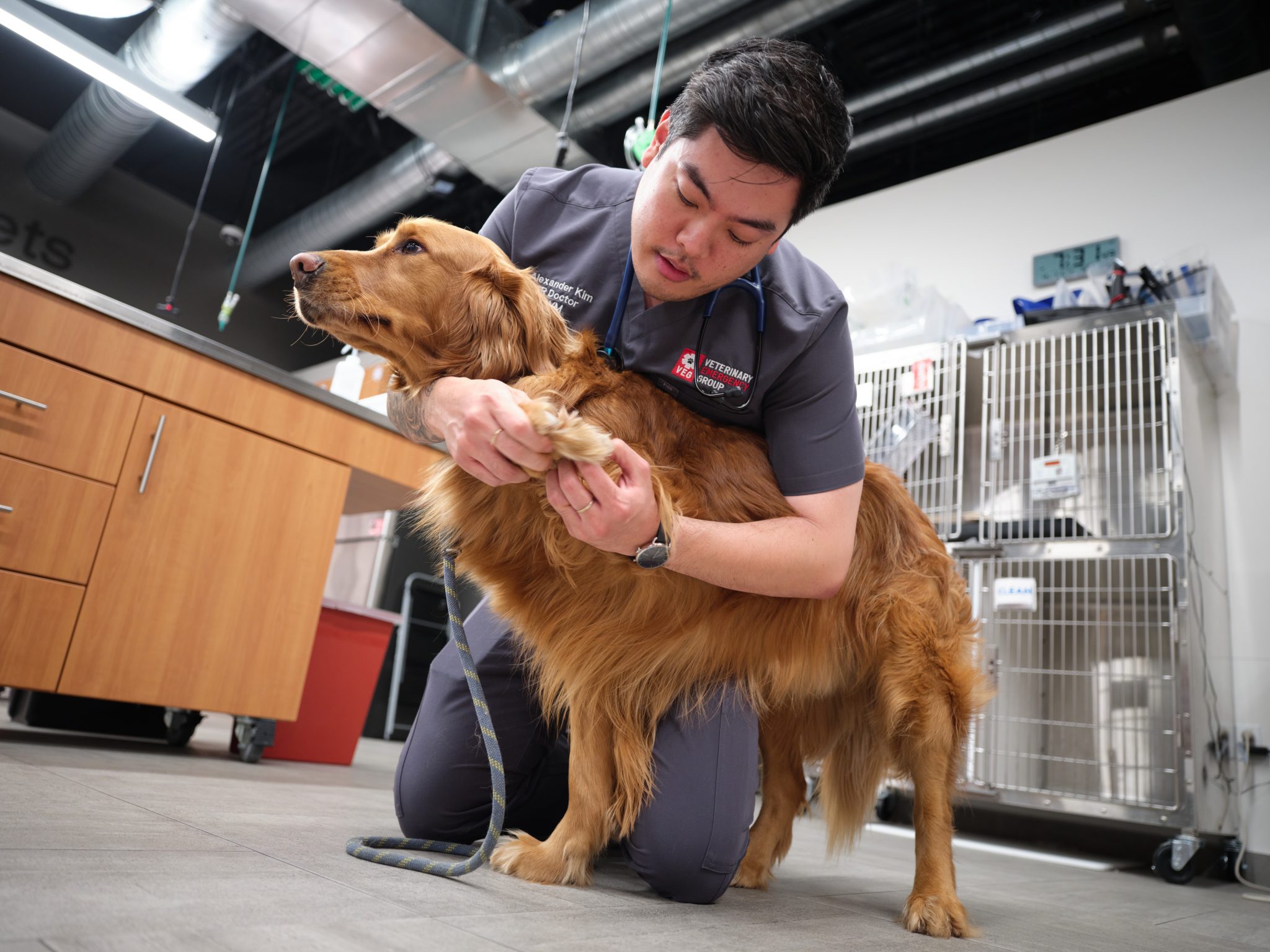
Why it is Important to Protect Your Dog’s Paws in Winter: 5 Possible Injuries
Dr. Jackie Schutt
Call & Speak with a doctor Open 24/7, Even Holidays!
Walk in today for:
Emergencies
Point-of-Care Ultrasound
Urgent Care
X-Rays
Diagnostics + Testing
End-of-Life Care
Surgery
Treatment + Hospitalization
Aah, winter – that magical time of year filled with snowflakes, cozy sweaters, and yes, some frosty temps, too! Let’s dig into why it’s so important to protect your dog’s paws during this season and investigate some common cold-weather injuries to avoid winter woes.
The Importance of Paw Protection in Winter
Ever stepped barefoot on an icy sidewalk? Ouch! Now imagine what your dog must feel. Canine paws may seem tough, but they’re just as susceptible to the cold, ice, and salt as our own feet. Sure, some breeds have a little more natural protection against the cold, but that doesn’t mean you should skip taking precautions.
Cold Weather and Your Dog’s Paws
Just like your lips can get chapped in winter, your pet’s paw pads can get dry and cracked, too. And like you, your pet’s not a fan of this uncomfortable symptom of frosty weather. It’s best to treat it to avoid bigger issues for your pup.
The Salt and Ice Dilemma
Road salt and ice melts are often used during winter to prevent slipping, but they can be harsh on your dog’s paws. The chemicals can irritate their skin. What’s more, these chemicals can be harmful if ingested during post-walk paw licking.
The Problem with Snowballs
You read that right—snowballs! Not the throwing kind, but the tiny snowballs that accumulate between their toes. These can be a real problem, causing discomfort and even lead to frostbite if left unnoticed. Regularly check for these during and after walks.
5 Possible Winter Injuries Affecting Dog Paws
It’s important to know the risks winter poses to our dogs. Here are five common winter-related injuries that can affect dog paws:
1. Frostbite
Yup, dogs can get frostbite too, mainly on their paws and ears. The tissue actually freezes, causing damage that may require veterinary attention.
2. Cracked Paws
Cold and dry conditions can lead to cracked paws. This is not only painful but can also make your dog more susceptible to infections.
3. Chemical Burns
As mentioned earlier, salt and other ice melts can cause chemical burns on your dog’s paws.
4. Ligament and Tendon Injuries
Snow and ice can be slippery! Your dog could easily slip and injure themselves, leading to potential ligament or tendon issues.
5. Hypothermia
While not directly related to paws, this is still a serious condition that can be exacerbated by prolonged exposure to cold and wet conditions.
How Can I Protect My Dog’s Paws?
Consider a small investment: doggie booties or traction boots. They’re fantastic for paw protection against harsh snowy or icy surfaces and provide traction to avoid slipping. After walking out in the elements, clean your dog’s paws thoroughly. For added measure, there are paw balms that act as moisturizers and protectants for your dog’s little “paw beans.”
Suspect a Problem? Call VEG!
If you notice any signs of the above injuries or discomfort in your dog, it’s crucial to consult a veterinarian as soon as possible. In severe cases, time is of the essence to prevent long-term damage or complications.
It’s easy to contact VEG. We have locations all over the country with experienced veterinarians who are available 24/7 to provide the care your pet needs. We never take appointments; our doors are open for walk-in emergencies. Not sure if you should come in? You can call first and speak directly with a veterinarian!
Remember, winter can be a wonderful season for you and your dog to enjoy, as long as you take the right precautions. Stay warm and keep those paws protected!

